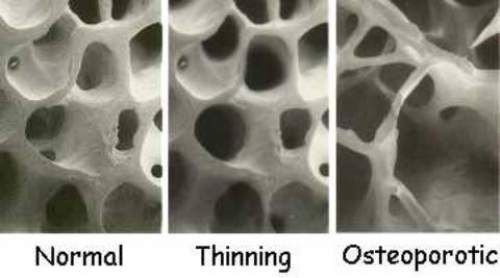What do you know about Calcium supplements ?
The below information is abstracted from reliable scientific research articles aiming to share helpful and more understanding about Calcium supplements.

Calcium is an important mineral element in the human body, which affects human life and health. 99% of calcium is found in bones and teeth, and 1% in blood. Calcium in bones and teeth can maintain the firmness of bones and teeth and prevents various orthopaedic diseases, including osteoporosis, osteopenia, osteomalacia and rickets. Calcium in the blood, extracellular fluid and soft tissue cells can maintain the normal contraction of skeletal muscle and myocardium; maintain the permeability of biological membranes, and secretion and storage of hormones. The adverse effects of calcium overdose include cardiovascular disease, kidney stones, prostate cancer and adverse gastrointestinal events. So we should choose the right dose for calcium supplement. The classification of the calcium formulation includes inorganic calcium, organic acid calcium, calcium amino acid chelate and collagen peptide chelated calcium. At present, the most common calcium supplement in the market is inorganic calcium and organic acid calcium. Calcium peptides have the advantages of high absorption efficiency, no side effects and high solubility. Therefore, the lack of calcium will lead to a variety of diseases in the department of orthopedics including osteoporosis, osteopenia, osteomalacia, and rickets [2].
Calcium balance is regulated by Parathyroid Hormone (PTH), Calcitonin (CT) and vitamin D3, and the target organs of these hormones are gut, kidney, and bone [13. The results showed that the average calcium absorption value was 35% and range from 17% to 58%. The absorption rate of calcium was positively correlated with the body mass index, dietary fat intake, serum 1,25-dihydroxy vitamin D and parathyroid hormone levels, while it was negatively correlated with total dietary calcium, dietary fiber, drinking and constipation. Bad habits such as smoking and drinking can also lead to a decline in calcium absorption. In addition, individual age factors also have a great influence on calcium absorption [18]. The calcium absorption rate can reach 60% in infancy because growth hormone can stimulate calcium absorption, reduced to 15-20% in adulthood.
Some people complain that after taking calcium supplements appear symptoms such as constipation, abdominal distention and other gastrointestinal symptoms. This is due to an amount of remaining unabsorbable calcium in the body that may lead to other effects such as kidney stones, prostate cancer in men.
Generally in commercial markets, people mostly it can be divided into three categories: inorganic calcium, organic acid calcium, amino acid chelate calcium and collagen peptide chelated calcium. Inorganic calcium The main source of calcium in inorganic calcium preparation is calcium carbonate, calcium bicarbonate, calcium phosphate, calcium phosphate, calcium chloride as well as oyster shell, shell, bone and other natural products. Calcium carbonate is the most common and the least expensive form of inorganic calcium supplement with high calcium content. Calcium carbonate is less soluble in water so requires a lot of natural stomach acid to free calcium to be absorbed after it is taken, and its bioavailability is poor. So, it can’t be taken with food, nor is it suitable for individuals with the hypochlorhydria or achlorhydria [32]. In addition, it has some side effects which are easy to cause gastrointestinal irritation.
Calcium L-threonate is a new drug for the treatment of osteoporosis. L-Threonic acid is an active metabolite of vitamin C. It is reported that L-Threonic acid can stimulate the uptake of vitamin C and prolong the retention time of vitamin C in T lymphocytes [51]. Vitamin C can stimulate the synthesis of procollagen and collagen. So, L-Threonic acid can play an important role in stimulating bone mineralization by stimulating vitamin C. Therefore, the combination of L-Threonic acid and calcium to form Calcium L-threonate can be used to treat osteoporosis. These data suggest that the serum calcium concentration after injection of calcium L-threonate is higher than that of other forms of calcium. The results showed that the bioavailability of calcium L-threonate was better. The results showed that calcium Lthreonate had no adverse effects on reproduction and fetal development, and did not cause maternal toxicity.
Most calcium preparations are poorly soluble and need to be dissolved by hydrochloric acid after oral administration, so the amount of gastric acid secretion directly affects the efficiency of calcium preparations. The elderly and children with poor adaptability cannot fully absorb calcium, resulting in low bioavailability of calcium preparations. Therefore, the elderly and children should choose good water solubility and good taste of calcium salts such as calcium lactate, calcium gluconate, and vitamin D can be added to promote the absorption of calcium in the small intestine. In addition, the absorption rate of calcium supplements can be increased to 10-30% at the same time with meals or after meals than before meals [32]. This is because the increase in the concentration of glucose and glucose polymer after meals can stimulate the absorption of calcium. In addition, taking calcium can cause transient increase in serum calcium level before, so that the probability of cardiovascular disease and kidney stones increase. The human body needs about 1000 mg of calcium per day, and WHO recommended adults need 800 to 1000 mg calcium per day [1], while children, women, the elderly need 1000 ~ 1500 mg calcium per day [62]. The Ca2+ content of calcium preparation is very low. Calcium carbonate supplement contains 40% calcium; calcium citrate contains 21% calcium; calcium lactate contains 13% calcium; calcium gluconate contains only about 9% calcium [10]. The dosage cannot fully meet the needs of the human body, so the calcium intake should be considered with the individual person's diet, age and other factors. The calcium formulations developed rapidly, have gone through four processes: inorganic calcium, organic acid calcium, amino acid chelated calcium and collagen peptide chelated calcium. At present, inorganic calcium and organic acid calcium have been widely used in clinical practice, especially organic acid calcium, which is widely used in children and the elderly because of its fewer side effects and better effect of calcium supplement.
* Source of research :
Progress in the Study of Calcium Formulations Xuefang Hu1, Huiling Cheng1, Shuwang He1,2,3* and Guangxi Zhai1,3*
¹Department of Pharmaceutics, College of Pharmacy, Shandong University, China
²Department of Pharmaceutical Development, Shandong Dyne Marine Biopharmaceutical Limited Corporation, China
³Pediatric Pharmaceutical Preparation Engineering Laboratory of Shandong Province, China
Common signs and symptoms of calcium deficiency
Why average height of Vietnamese people are low ?
Warning from Experts : Obesity in people under 40 years old having high risk of cancers
- Chương trình khuyến mãi tháng 8/2022
- Common signs and symptoms of calcium deficiency
- Why average height of Vietnamese people are low ?
- Warning from Experts : Obesity in people under 40
- Want to live a longer life? There are five things
- What do you know about Calcium supplements ?
- Can Food Act as Medicine? All You Need to Know
- 10 Health Benefits of Rice Bran Oil






